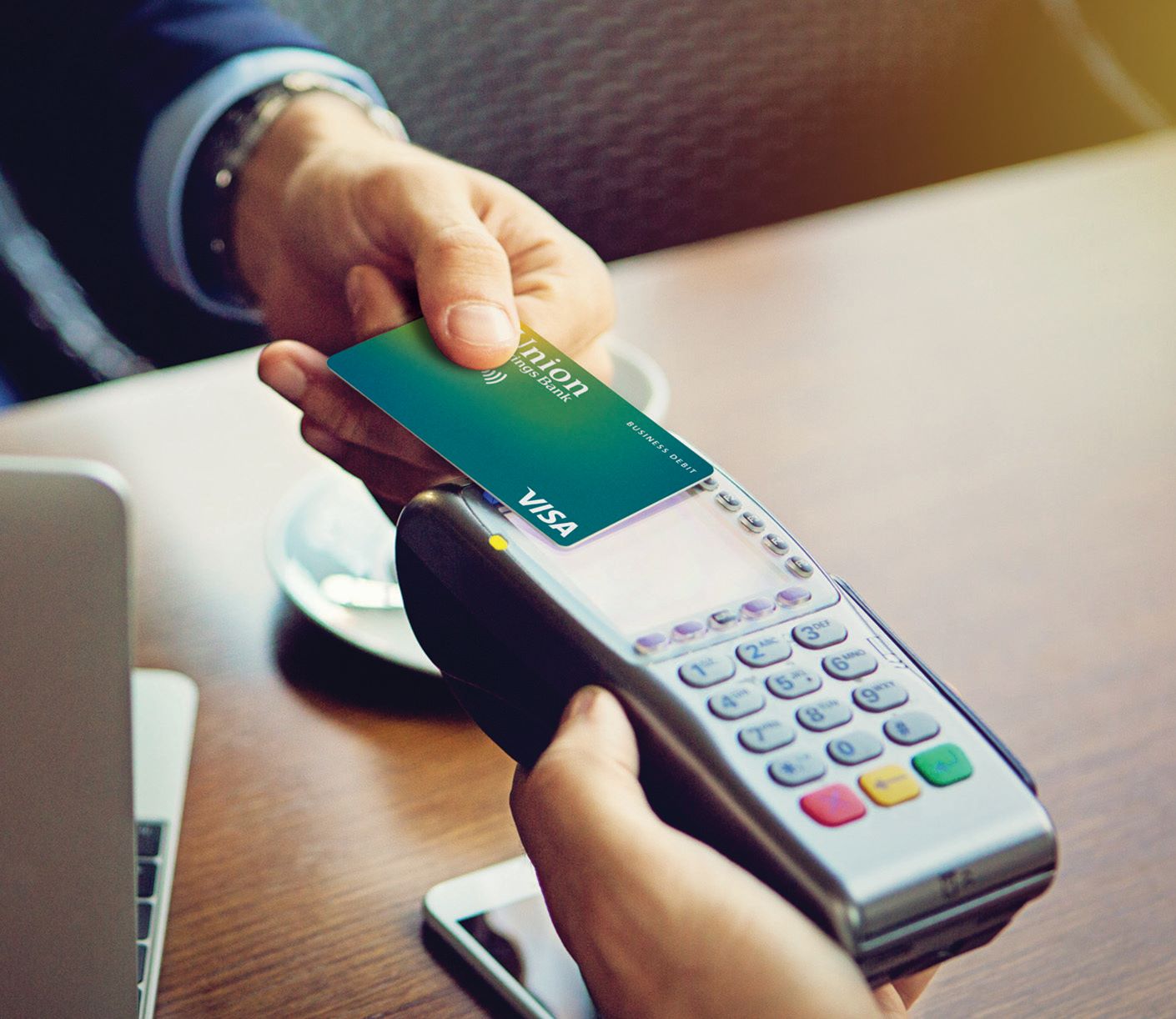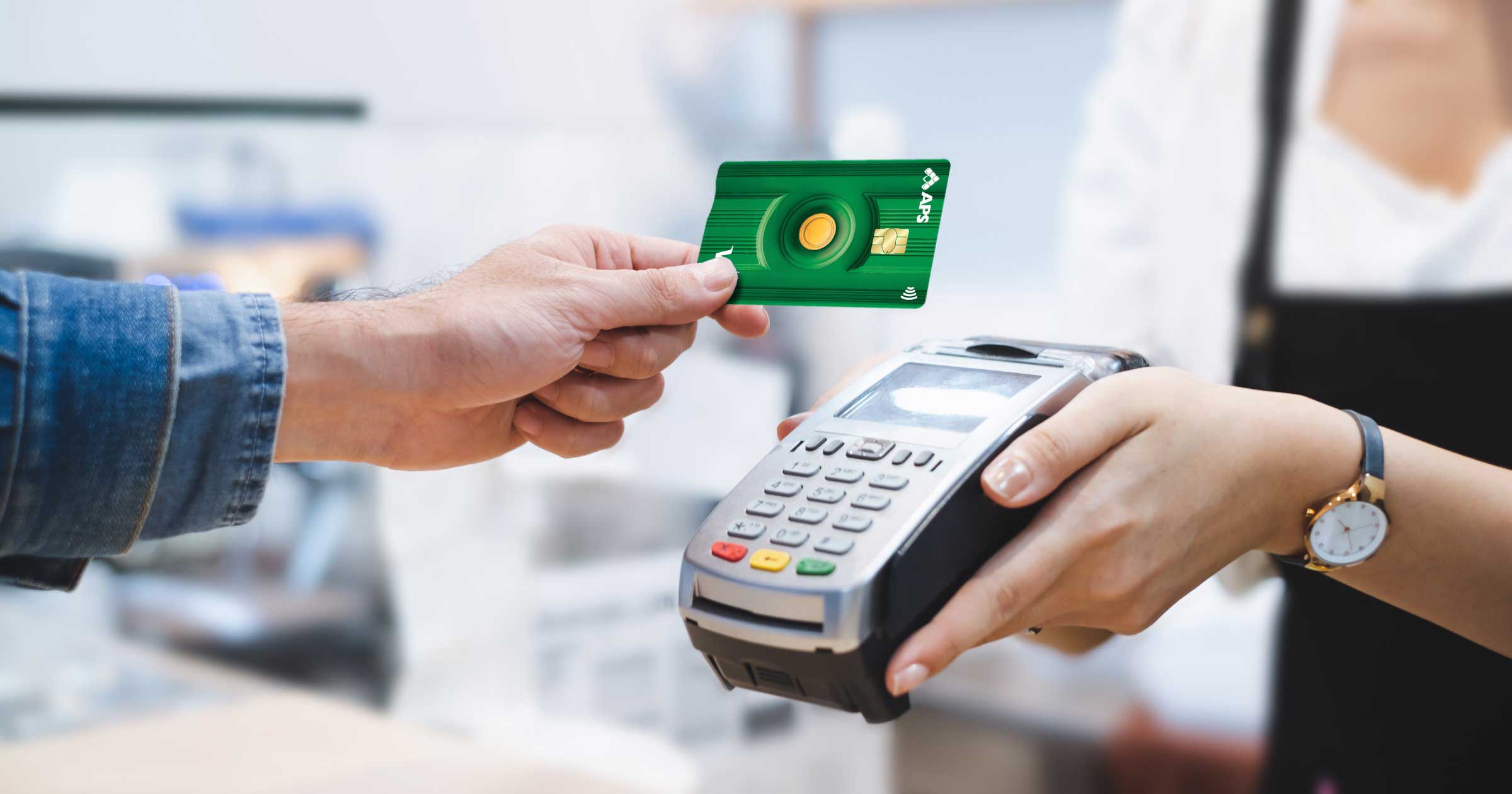

Finance
How To Pay Someone Else’s Credit Card
Modified: February 21, 2024
Discover how to manage someone else's credit card payments and improve your financial knowledge with our comprehensive finance guide.
(Many of the links in this article redirect to a specific reviewed product. Your purchase of these products through affiliate links helps to generate commission for LiveWell, at no extra cost. Learn more)
Table of Contents
Introduction
Managing finances is an essential aspect of our daily lives, and there might be situations where you find yourself needing to pay someone else’s credit card bill. Whether it’s assisting a family member, making a payment on behalf of a friend, or handling the expenses for a joint account, understanding how to go about this process is crucial.
However, it’s important to note that there are legal and ethical considerations involved when paying someone else’s credit card. It’s essential to ensure that you have proper authorization to make these payments and that you are not engaging in any fraudulent activities. Additionally, it’s always wise to communicate openly and transparently with the person whose credit card you are paying to avoid misunderstandings or conflicts.
In this article, we will explore various payment options available to pay someone else’s credit card bill. From authorized users to bank transfers, online payment platforms, third-party payment services, writing checks, and paying in-person, we will cover the different avenues you can take based on your specific circumstances.
Remember, each option comes with its own advantages, limitations, and potential fees. Make sure to assess your own financial situation, consider any potential risks, and choose the payment method that best aligns with your needs.
So let’s dive in and explore the various options you have for paying someone else’s credit card bill!
Understanding the Legal and Ethical Considerations
Before you proceed with paying someone else’s credit card bill, it’s important to understand the legal and ethical considerations involved. While helping someone in need or managing joint expenses is admirable, it’s crucial to ensure that you are doing so within the boundaries of the law.
Firstly, you should have proper authorization from the individual whose credit card bill you are paying. This can be in the form of a written agreement, verbal consent, or being listed as an authorized user on the credit card account. Without proper authorization, making payments on someone else’s credit card could be considered unauthorized usage and may result in legal consequences.
Additionally, it’s important to consider the ethical implications of paying someone else’s credit card bill. Ensure that the person is aware of and agrees to your involvement in handling their finances. Open and transparent communication helps avoid misunderstandings, conflicts, or accusations of unauthorized actions.
It’s also essential to keep in mind that paying someone else’s credit card bill does not make you liable for any debts incurred on the card. You are simply making a payment as a favor or on behalf of someone else. Therefore, it’s crucial to maintain clear documentation of your payments to protect yourself in case of any disputes or misunderstandings.
Finally, be cautious of any potential fraudulent activities or scams. Only make payments using secure and trusted methods to ensure the safety of your personal information and financial details. If you suspect any fraudulent activity, notify the credit card issuer immediately.
By understanding and adhering to the legal and ethical considerations, you can confidently proceed with paying someone else’s credit card bill, knowing that you are acting responsibly and within the boundaries of the law.
Payment Options: How to Pay Someone Else’s Credit Card
When it comes to paying someone else’s credit card bill, you have several options to choose from. The suitability of each method depends on factors such as convenience, fees, and the preferences of both parties involved. Here are some common payment options:
- Authorized User: If you are closely connected to the cardholder, they can add you as an authorized user on their credit card account. This allows you to make payments directly, either online or by mailing a check, under your own name. Keep in mind that being an authorized user means you will have access to the credit line and any outstanding debt on the card, so ensure that you have a trustworthy relationship with the cardholder.
- Bank Transfer: Many credit card issuers allow payments to be made through bank transfers. You can initiate a transfer from your own bank account to the cardholder’s credit card account. This option is convenient and usually free of charge, but it may take a few business days for the payment to reflect on the credit card statement.
- Online Payment Platforms: Most credit card companies provide online portals or mobile apps that allow you to make payments on behalf of someone else’s credit card. By logging into the card issuer’s website or app, you can enter the payment amount, card details, and process the payment securely. This option is quick, convenient, and provides a digital record of the payment.
- Third-Party Payment Services: There are also third-party payment services, such as Venmo, PayPal, or Zelle, that allow you to transfer funds to another person’s credit card account. These platforms often require both the sender and receiver to have accounts, but they offer the convenience of instant transfer and may have additional features like payment reminders or splitting bills.
- Writing a Check: If you prefer a traditional method, you can write a check payable to the credit card issuer and mail it to the designated payment address. However, keep in mind that mailing a check may take longer for processing, and it’s important to ensure the correct payment details are included to avoid any delays or misallocation of funds.
- Paying In-Person: Some credit card issuers have physical branch locations where you can make payments in person. You can visit the branch with the necessary payment information and pay the credit card bill over the counter. If this option is available, it provides the advantage of a face-to-face interaction and immediate confirmation of payment.
Consider the specific circumstances and preferences of both parties involved to choose the payment method that best suits your needs. It’s crucial to maintain clear documentation of the payments made, including receipts, transaction records, or confirmation emails, to ensure accountability and avoid any misunderstandings or disputes in the future.
Option 1: Authorized User
One of the most straightforward ways to pay someone else’s credit card bill is by becoming an authorized user on their credit card account. This option allows you to make payments directly, either online or by mailing a check, under your own name.
To become an authorized user, the primary cardholder must contact their credit card issuer and request to add you to their account. Once added, you will typically receive a separate credit card with your name on it. This card will be linked to the same account as the primary cardholder and will have access to the credit line.
As an authorized user, you will have the responsibility to make payments on the credit card account. This means you can simply log in to the credit card issuer’s website or mobile app and make payments using your own bank account or by entering your credit card details. Alternatively, you can write a check payable to the credit card issuer and mail it to the payment address.
Being an authorized user has its advantages. It allows you to have direct control over the payments, ensuring they are made on time and in the correct amount. Additionally, it can be convenient for joint expenses or situations where you are responsible for managing someone else’s finances.
However, it’s important to consider the potential drawbacks as well. By becoming an authorized user, you are agreeing to take on some level of responsibility for the credit card account. This means that any charges made on the card will reflect on your credit history, and if the primary cardholder fails to make payments, it can negatively impact your credit score.
Therefore, it’s essential to have a trustworthy relationship with the primary cardholder and establish clear communication regarding payment expectations and responsibilities. It’s also wise to regularly review the credit card statements to ensure accuracy and address any discrepancies promptly.
Becoming an authorized user can be a viable option for paying someone else’s credit card bill, but it’s important to carefully consider the implications and have a solid understanding of the financial arrangement between you and the primary cardholder.
Option 2: Bank Transfer
Another convenient and commonly used method to pay someone else’s credit card bill is through a bank transfer. Many credit card issuers allow you to initiate a transfer from your own bank account to the cardholder’s credit card account.
To make a bank transfer, you will need the credit cardholder’s account information, which typically includes their bank account number and routing number. You can then log in to your own online banking platform or visit your bank in person to set up the transfer.
Bank transfers offer several advantages when it comes to paying someone else’s credit card bill. They are generally free of charge, allowing you to make the payment without incurring additional fees. Transfers are often processed quickly, but it’s important to note that it may take a few business days for the payment to reflect on the credit card statement.
When initiating a bank transfer, ensure that you enter the correct payment details, including the cardholder’s account information, payment amount, and any reference or account numbers specified by the credit card issuer. Double-checking these details helps avoid any delays or misallocation of funds.
It’s important to keep in mind that bank transfers require trust and a good relationship between the payer and the cardholder. You are essentially providing your banking details to the cardholder, so it’s crucial to be confident in their integrity and ability to handle your information responsibly.
Additionally, it’s recommended to maintain clear documentation of the transfer, such as transaction confirmation emails or screenshots, for your own records. This ensures accountability and provides evidence of the payment made, should any issues or disputes arise in the future.
Bank transfers offer a secure and efficient way to pay someone else’s credit card bill, allowing you to transfer funds directly from your bank account to theirs. Just make sure to communicate openly and securely with the cardholder and take necessary precautions to protect your personal information throughout the process.
Option 3: Online Payment Platforms
In our increasingly digital world, online payment platforms have become a popular option for paying someone else’s credit card bill. Many credit card issuers provide their own online portals or mobile apps that allow you to make payments on behalf of someone else’s credit card.
To make a payment through an online payment platform, you will typically need the primary cardholder’s credit card account information. This may include their credit card number, expiration date, and security code. You can then log in to the credit card issuer’s website or app and navigate to the payment section.
Once on the payment page, you can enter the payment details, including the payment amount and the credit card information. These platforms often provide a secure environment for entering your payment information and encrypt the data to protect your sensitive details.
Online payment platforms offer several advantages when it comes to paying someone else’s credit card bill. They provide a convenient and user-friendly interface, allowing you to make payments from the comfort of your own home or on the go.
Additionally, online platforms offer features that can help streamline the payment process. They often allow you to store payment information for future use, set up recurring payments for regular expenses, and send payment reminders to ensure payments are made on time.
Furthermore, using an online payment platform provides a digital record of the payment. You will usually receive a confirmation email or notification after making the payment, serving as proof of the transaction.
It’s important to note that some online payment platforms may charge a convenience fee for using their services. These fees can vary depending on the platform, so it’s worth considering the associated costs before making your payment.
By leveraging online payment platforms, you can efficiently pay someone else’s credit card bill with just a few clicks. It’s crucial to practice online security measures, such as using secure networks and ensuring the legitimacy of the websites or apps you use, to protect your personal and financial information throughout the payment process.
Option 4: Third-Party Payment Services
When it comes to paying someone else’s credit card bill, another option to consider is utilizing third-party payment services. These services, such as Venmo, PayPal, or Zelle, allow you to transfer funds to another person’s credit card account.
To use a third-party payment service, both the sender and the receiver typically need to have accounts with the platform. You may need to link your bank account or credit card to your account for funding the payment. Once set up, you can initiate the transfer by entering the receiver’s payment information, which may include their email address, phone number, or username associated with the service.
One of the key advantages of third-party payment services is the convenience they offer. Transactions can be completed quickly, often within minutes, and the funds can be instantly available to the receiver. These services focus on ease of use and typically provide a user-friendly interface to facilitate seamless transactions.
Furthermore, third-party payment services often offer additional features that can enhance the payment experience. For example, some platforms allow you to split bills among multiple users, request or send payment reminders, or even make payments through voice command functionality.
However, it’s important to consider any fees associated with using third-party payment services. While some services may offer free transfers between friends or family, they may charge a small fee for certain types of transactions, such as business payments or transfers funded by credit cards. Review the fee structure of the service you choose to ensure you are aware of any costs involved.
It’s worth noting that while third-party payment services offer convenience and quick transfers, they should be used with caution. Make sure you are using a reputable and secure platform, and only provide your payment information to trusted individuals. It’s also essential to have open communication with the cardholder and ensure they are comfortable receiving payments through a third-party platform.
By leveraging third-party payment services, you can conveniently and securely pay someone else’s credit card bill, taking advantage of the many features and benefits these platforms offer.
Option 5: Writing a Check
If you prefer a more traditional method of paying someone else’s credit card bill, you can opt to write a check. Though check usage has declined with the rise of digital payment methods, it is still a viable option for paying bills.
To pay someone else’s credit card bill by check, you will need the primary cardholder’s payment details, including the credit card issuer’s name, mailing address, and any specific payment instructions. Ensure to obtain the correct information to avoid any delays or misallocation of funds.
Begin by writing the date on the line provided at the top right corner of the check. Then, write the name of the credit card issuer or company on the “Pay to the Order of” line. Next, fill in the payment amount, both in numerical and written form, making sure the amounts match. The memo line can be used to provide additional information, such as the primary cardholder’s name or account number.
It’s crucial to clearly write the recipient’s name and address on the envelope, as well as add your return address. This ensures that the payment reaches the correct destination. Keep in mind that mailing a check may take longer for processing and delivery, so plan accordingly to avoid late payments.
Writing a check offers a tangible record of payment, which can be useful for both the payer and the primary cardholder. Make sure to retain a copy of the check and any accompanying documentation as proof of payment.
One thing to consider when paying by check is the potential for the check to be lost or stolen during transit. While this risk exists, it can be mitigated by using secure mailing methods or registered mail with tracking options.
Before opting for this payment method, ensure that the primary cardholder accepts check payments. Some credit card issuers no longer accept checks or may charge additional fees for processing them. Also, verify if there are any specific payment instructions or payment coupon requirements provided by the card issuer.
Writing a check may not be as quick or convenient as other payment options, but it can still be a reliable method for paying someone else’s credit card bill, especially for those who prefer a more traditional approach.
Option 6: Paying In-Person
If you prefer a personal touch and a more immediate payment method, paying someone else’s credit card bill in-person can be a viable option. Some credit card issuers have physical branch locations where you can make payments directly.
To pay in-person, you will need the primary cardholder’s credit card account information and any necessary identification documents. It’s also a good idea to call ahead or check the credit card issuer’s website to confirm if they accept in-person payments and to identify which branch location is most convenient for you.
When visiting the branch, inform the bank representative that you would like to make a payment on someone else’s credit card account. They will guide you through the process, which typically involves filling out a payment form and providing the necessary payment details.
Paying in-person offers several advantages. It allows for face-to-face interaction and the opportunity to ask any questions or seek clarifications regarding the payment process. It also provides immediate confirmation of the payment, as the bank representative can verify and process the payment while you’re present.
However, it’s important to note that not all credit card issuers offer in-person payment options, and branch locations may not be easily accessible for everyone. Additionally, business hours and wait times at the branch may vary, so it’s essential to plan accordingly, especially if you have time constraints.
When making an in-person payment, it’s advisable to keep detailed documentation of the transaction, such as receipts or payment confirmation slips provided by the bank. These records serve as proof of payment and can be useful for both parties involved.
Before choosing this payment option, ensure that the primary cardholder’s credit card issuer allows in-person payments and verify if any specific requirements or fees apply. It’s also a good practice to communicate with the primary cardholder to ensure their comfort and agreement with this payment method.
Paying someone else’s credit card bill in-person can offer a personal touch and immediate confirmation, making it a suitable option for those who prefer the reassurance of face-to-face transactions.
Conclusion
When it comes to paying someone else’s credit card bill, there are several options available to suit different preferences and circumstances. Whether you choose to become an authorized user, utilize bank transfers, online payment platforms, third-party payment services, write a check, or pay in-person, each method offers its own advantages and considerations.
It’s important to remember the legal and ethical considerations involved when handling someone else’s finances. Ensure that you have proper authorization, maintain open communication, and prioritize transparency throughout the process. By doing so, you can avoid any legal issues or misunderstandings.
Consider the convenience, security, and potential fees associated with each payment method. Assess your own comfort level, the reliability of the payment option, and the preferences of the primary cardholder to determine the most suitable approach.
Regardless of the chosen payment method, it’s crucial to keep a clear record of the payment, including receipts, confirmation emails, or transaction records, for your own reference and protection.
Remember, it’s always a good practice to double-check payment details and ensure the accuracy of the information provided to avoid any delays or misallocations of funds.
Ultimately, paying someone else’s credit card bill requires a balance between trust, responsibility, and effective communication. Assess your own financial situation and the level of involvement you are comfortable with before proceeding.
By navigating these payment options with care and understanding, you can successfully and responsibly pay someone else’s credit card bill, providing assistance or managing joint expenses while maintaining a secure and transparent financial relationship.














